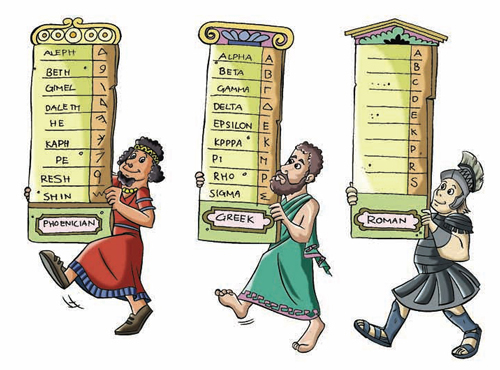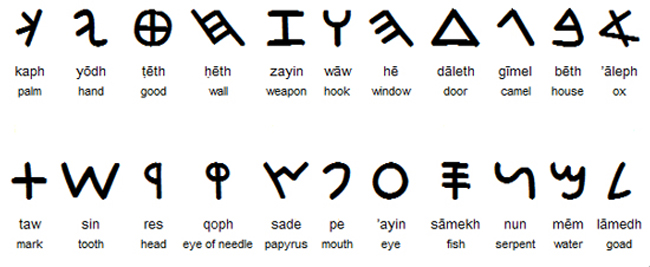You searched for:
“paleontypography”
The arrangement and appearance of printed letters or ancient printing: The evolution of three paleontypographies or classical languages; including, Phoenician, Greek, and Roman.



The Phoenician alphabet was perhaps the first alphabetic script to be widely-used because the Phoenicians traded around the geographical area of the Mediterranean and beyond while they established cities and colonies in parts of southern Europe and North Africa.
The origins of most alphabetic writing systems can be traced back to the Phoenician alphabet, including Greek, Etruscan, Latin, Arabic and Hebrew; as well as the scripts of India and East Asia.
Significant Features
- Direction of writing is from the right to the left in horizontal lines: aleph to tow; as shown in the chart below.
- The writing system is abjad, a consonant alphabet with no indication of vowels.
- The number of letters is twenty-two; however, there were variations in their forms in different regions and at different times.
- The names of the letters are acrophonic, relating to the use of symbols to represent sounds, and their names and shapes can be traced back to Egyptian Hieroglyphs; for example, the name of the first letter, aleph, means ox which was developed from a picture of an ox's head.
- Some of the letter names were changed by the Phoenicians, including gimel, which meant camel in Phoenician, but was originally a picture of a throwing stick or a giml.
Here are the Phoenician symbols or letters.

Click on this Greek and Related Roman Alphabets page for more information.
This entry is located in the following units:
grapho-, graph-, -graph, -graphy, -grapher, -graphia
(page 64)
palaeo-, palae-, paleo-, pale-
(page 4)
typo-, typ-, -type
(page 3)
